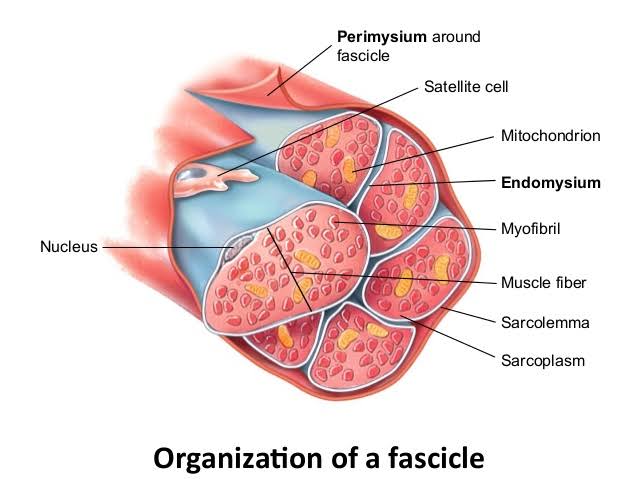- Though neurons do not possess the ability to divide in adult humans, glial cells do, and in case of injury or disease, tend to fill up the gaps created by loss of neurons.
- Most muscle cells lose their ability to divide after maturation. There are a few cases however, like those in disease or damage, when cells that are lost may be replaced. These are discussed below:
Skeletal muscles:
Each skeletal muscle fiber arises by fusion of multiple myoblasts during embryonic development. Once fusion occurs, the ability to divide is lost. However, a few myoblasts do persist in mature skeletal muscle as satellite cells, which retain the capacity to fuse with one another or with damaged muscle fibres to regenerate functional muscle fibres. So even though our muscle cells cannot divide, they can, in some cases, be regenerated. 
Smooth Muscles:
Certain smooth muscle fibers, like those in the uterus retain their capacity for division. Also, new smooth fibers can arise from pericytes, stem cells
present in association with small veins and blood capillaries.
Cardiac Muscle:
These fibers are unable to divide on their own. However, there have been studies related to this, and it was shown that bone marrow stem cells could be used to regenerate damaged heart tissue.
(Refer: Cell transplantation for cardiac regeneration: where do we stand? Neth Heart J. 2008 Mar; 16(3): 88–95.)
I hope this answers the question.
I read this in Principles of Anatomy and Physiology, 12th Edition, Tortora, G. J., Derrickson, B.

